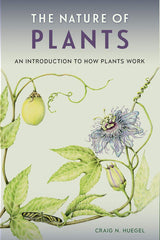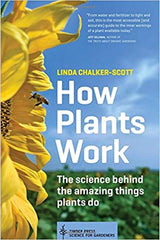What impressions of plants are we giving? Part 2. Roots do more than we think. July 14 2019, 0 Comments
Last time, I wrote about the Montessori material called “Botany Impressionistic Charts.” I’ve looked at the meaning of the work “impressionistic,” and the only definition that seems to be relevant to the charts is “overview.” If I ever produce a version of this material, I will call it “An Overview of How Plants Work.”
In my previous article, I addressed the needs of plants, including the one so often omitted, the need for oxygen. This time, I’m looking at roots. Well, not literally looking at them other than on the weeds I’ve been pulling, but I’m reading about them.
Roots on the traditional charts are rather simple. They anchor the plant in the soil, take in water, and prevent soil erosion. This makes them seem about as interesting as tent stakes and drinking straws. There is a lot more to roots. I recently acquired a book called The Nature of Plants: an introduction to how plants work. The author, Craig N. Huegel, states “Roots may well be the most important plant organ and the least understood.”

Roots are a last frontier for botany for good reason. They are hidden in the ground, and any attempt to see them disturbs them. In the past few years, there have been attempts to image root growth with MRI, CAT scans, and optical scanners in a tube that is buried in the ground amid the roots. Botanists are realizing that understanding roots is very important, both for the health of the plant and the planet. The ability of a plant to take up carbon dioxide depends on its roots.
There are some items of misinformation on the traditional “Botany Impressionistic Charts.”
- Roots grow only to the drip line of the foliage. Wrong! If you have ever weeded a garden or dug up plants, you’ll know this one is a myth. At least in all but the most mature trees, the feeder roots extend about 2-3 times the diameter of the canopy according to Morton Arboretum, Colorado State University Extension, and other reliable sources. The root spread of herbaceous plants varies tremendously depending on species and environment, but I have seen many root maps of herbaceous plants that show roots extending well beyond the diameter of the foliage.
- As a result of the spread of roots, the leaves of the plant do not direct rainwater within the dripline because the roots end there. In fact, I found only one example of leaves sending rainwater to roots, and that was desert rhubarb from Israel.
- Roots seek water. This happens, but not like it is usually illustrated. Most of a tree’s roots grow in the top 6-24 inches (15-60 cm) of the soil. These laterals are the primary water absorbers. There aren’t many larger deep roots, and these don’t turn and head off to distant water. Hydrotropism occurs over millimeter distances, not meters. The part of the root that turns is the root cap, which means only the tip end of the root changes course. Botanists describe root foraging, in which roots grow out from the plant all directions and give rise to many small branches when they encounter pockets of water or minerals that they need. This would be a better picture to give children.
Useful concepts illustrated on the charts include:
- Roots hold the soil. This is certainly an important function of roots. Another chart could go beyond this and show that roots improve the soil as well. They make channels in the soil and excrete substances that cause soil particles to clump. This helps water and oxygen penetrate the soil. They also excrete substances that help the plant solubilize and gather nutrients such as phosphorus and iron. These exudates feed the helpful soil bacteria near the roots as well.
- Roots grow around obstacles. They seem to feel their way around the obstacle until their path is open.
Here are other important ideas about roots that are not illustrated on most sets of botany impressionistic charts.
- The first root of young plants grows down and the shoot grows up (gravitropism). (Soon after the primary root forms, the lateral roots grow from it. In most monocots, the primary root is short-lived, and many adventitious roots grow from the base of the stem.)
- Roots store the extra food that the leaves make. This is easy to see in a root like a carrot or beet, but even slender roots store food.
- Roots have feeding partnerships with fungi (mycorrhizae) and bacteria. These microbial partners also help defend the root from harmful microorganisms. The majority of plants relies on mycorrhizae and grows poorly or not at all without them. Children need to know about this, the most wide-spread symbiosis on Earth.
- Roots can be adapted to serve other functions. Examples include prop roots, climbing roots, parasitic roots (haustoria), and pneumatophores.
I encourage you to give children an accurate, exciting view of roots. There is plenty of mystery and discoveries to be made about the root system. Here is another book that can help you, How Plants Work: The science behind the amazing things plant do by Linda Chalker-Scott.

Happy botany studies!
Priscilla
